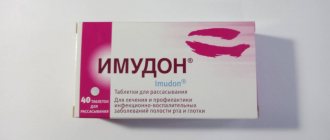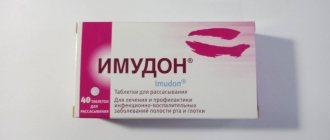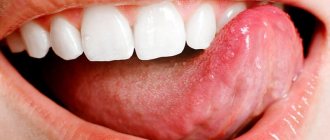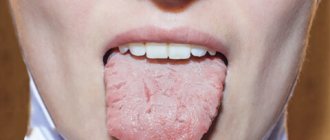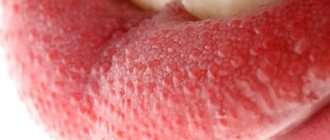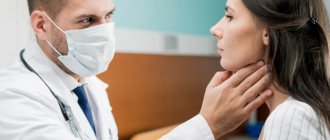Spasm of the gastric muscles when the gastric sphincter is open can cause gas masses to enter the oral cavity, and the taste of the food eaten may be felt. This is due to the release of its undigested particles along with the air. The release of some gastric juice in some cases causes a burning sensation in the esophagus and mouth, as well as a sour taste.
This spasm is called belching. Moreover, the process of regurgitation of food is absolutely normal for recently born children, thus they get rid of excess food and accumulation of gases in the stomach. With the growth of the digestive tract organs, as well as the cessation of breastfeeding, this phenomenon disappears. Although in adulthood, every person periodically experiences belching.
In healthy people, belching is a one-time event and the release of air is not accompanied by unpleasant sensations, since a clean air bubble comes out. A small amount of it is necessary to regulate pressure in the gastrointestinal tract. If too much air accumulates, it comes out without causing us any inconvenience. However, belching can be not only a normal functioning of the body, but also a sign of pathological processes.
Factors causing belching
Belching is a sign of inflammatory processes in the esophagus.
Belching in people who do not suffer from diseases of the gastrointestinal tract, as a rule, is episodic.
The masses released either have a neutral odor, or an unpleasant odor of undigested food is felt. Appears due to:
- active articulation during eating;
- swallowing insufficiently crushed food fragments too quickly;
- eating under stress;
- eating too much;
- Swallowing too much air occurs with food or simply during activity.
In addition, certain types of food can cause active formation of gas bubbles that escape through the esophagus into the oral cavity:
- sparkling mineral water, sweet soda;
- artificially oxygenated drinks;
- milk drinks;
- cold desserts such as ice cream and popsicles;
- dishes with a lot of onions, or excessive consumption of onions raw;
- peas, beans, soybeans and other beans or cabbage dishes also cause belching, although they are more characterized by increased gas formation in the intestines.
Polyfecalia in children
In children, the amount of feces exceeds 2% of food eaten and liquid drunk. It should be taken into account that the amount of feces increases with age. The amount of excrement in children of the 1st year of life is relatively greater than in older children and adults.
Polyfecalia is characteristic primarily of malabsorption syndrome. Polyfecality and stool disorders in chronic pancreatitis are caused by a violation of the topography of cavity and membrane digestion due to enzymatic deficiency.
Hungry stools resemble dyspeptic stools, but are usually thicker, darker, and may contain an admixture of mucus.
With simple dyspepsia, the stool is liquid, contains an admixture of greens (due to the rapid transit of biliverdin impurities through the intestines) and white lumps (a large amount of calcium soaps), a sour odor, and often foamy (fermentative dyspepsia).
The main diseases that cause belching
First of all, pathological belching is periodic and serves as a symptom of diseases such as:
- inflammatory process in the pancreas;
- inflammation of the gastric mucosa;
- dysfunction of the gallbladder;
- inflammation of the duodenal mucosa;
- stomach ulcer;
- displacement or compression of the esophageal tube;
The appearance of regular belching in combination with an unpleasant rotten smell should be alarming; a lump in the stomach may also be felt. These symptoms are typical for malignant neoplasms.
Classification
To assess the patient’s condition and unify data, a classification is used; depending on the degree of damage to the esophagus, several stages of reflux esophagitis are distinguished.
- I - rounded and longitudinal delimited, non-merging foci of inflammation, spreading to the mucous membrane of the esophagus from the Z-line - the border of the transition of the multilayered squamous epithelium of the esophageal mucosa into the columnar epithelium of the gastric mucosa;
- II - lesions in the Z-line zone merge, but do not cover the entire circumference of the esophagus;
- III - merging lesions covering the entire surface of the mucosa;
- IV - chronic damage to the esophagus, in which fibrous stenosis, shortening of the esophagus, peptic ulcers, and Barrett's esophagus develop.
To determine the stage of reflux esophagitis, it is necessary to undergo an examination, based on the results of which treatment is prescribed.
The process of regurgitation at the end of a meal
Belching may occur after eating.
At the end of a meal, the process of belching can be a physiological norm.
However, in case of disturbances in the functioning of the gastrointestinal tract, belching after eating is also a characteristic symptom; it indicates:
- inflammation of the pancreas in a sluggish and acute form;
- inflammation of the duodenal bulb;
- violation of the patency of the bile ducts;
- inflammation of the intestinal mucosa with a high concentration of acid in the gastric juice;
- inflammatory processes in the esophagus.
Regurgitation that is periodic in nature may indicate disturbances not only in the functioning of the digestive organs, but also some hidden diseases of other systems. Therefore, it is necessary to obtain a conclusion about your health status from your attending physician.
To summarize, we can say that periodic belching occurs due to:
- insufficiently balanced diet;
- irregular eating habits;
- excessively active behavior at the table;
- swallowing large amounts of air;
- dysfunction of the digestive system;
- diseases of other organs not related to the process of digesting food. For example, problems with cardiac activity also contribute to the appearance of belching;
- hiatal hernia.
In addition, there are a number of diseases accompanied by belching phenomena:
- ulcerative lesions in the intestines and stomach;
- insufficient secretion of digestive enzymes;
- reflux of stomach contents into the esophagus;
- disruption of the outflow of bile and the functioning of the pancreas.
Constipation in a child, children
Constipation is a long-term (more than 48 hours) delay in bowel movement, accompanied by difficulty in defecation, as well as a small amount (less than 100 g per day) or increased hardness of feces, and a feeling of incomplete bowel movement. Constipation can be organic and functional. The most common causes of constipation are:
1) nutritional defects, malnutrition, monotonous milk nutrition, lack of products in the diet of older children that provide a significant amount of food waste; 2) anatomical defects in the development of the intestine, malformations of the anorectal zone; 3) atonic intestinal conditions; 4) reflex constipation with cracks and abrasions of the anus and rectum.
If children do not have stool for several days from birth, one should think about congenital anomalies of intestinal development. In older children, constipation is observed with hypothyroidism, colitis, dolichocolon, megacolon. Mechanical obstacles and medications (atropine-like, catecholamines) lead to constipation.
Among functional constipation, spastic or hypokinetic constipation is most common. As a result of the absorption of rotting products from the intestines during chronic constipation, children’s well-being is disrupted: increased fatigue, headaches appear, appetite decreases, and sleep deteriorates.
Conditioned reflex constipation appears in a child as a result of a change in the usual lifestyle: with the start of attending kindergarten, school, when the usual time of defecation shifts.
In the occurrence of psychogenic constipation, factors such as prolonged and frequent stressful situations in the family, school, excessive emotional and mental stress with simultaneous physical inactivity are important.
Various forms of regurgitation
Belching may have a bitter taste.
According to the form of occurrence, regurgitation can be of a different nature:
- after finishing a meal with a sour taste in the mouth;
- with a hint of bitter taste;
- with the characteristic smell and taste of acetone;
- belching with just air.
Belching is also classified according to the factors causing it:
- sour with a high concentration of acid in the stomach;
- bitter taste, indicating reflux;
- with the smell of acetone or rotten food in patients with diabetes or with stagnation of food residues in the stomach;
- neutral belching without taste or smell - due to poor nutrition, swallowing air, minor problems with the digestive system.
It is necessary to dwell in detail on the origins of the appearance of varieties of belching during pathological processes in the body.
Motor dyspepsia in children
One of the functional disorders of the stomach is motor dyspepsia , caused by changes in its peristalsis (hyper- or hypokinesia) and (or) muscle tone (hyper-or hypotension), accelerating or delaying the evacuation of gastric contents and manifested by pain, heartburn, belching, nausea and vomiting.
Motor dyspepsia may be based on a number of reasons, primarily nutritional reasons (poor diet, consumption of spicy, irritating and soggy foods), functional or organic changes in the central nervous system. Gastric hypertension is observed with gross food errors (cold cutlet hastily); hypotension, as a rule, after prolonged stasis in a child with dysmesenchymosis, with spasm or stenosis of the pylorus.
Sour taste when burping
Belching with a sour taste appears in the following cases:
- reflux of stomach contents into the esophagus;
- gastritis;
- ulcerative lesions;
- oncological diseases.
Diseases of the gastrointestinal tract are always accompanied by belching, and without curing them it is impossible to get rid of this symptom. Patients need to consult a specialist because they may suffer from ulcerative lesions or inflammation of the mucous membrane if:
Prevention
Proper diet and nutrition are the basis for successfully preventing heartburn and nausea. Additional recommendations:
- rejection of bad habits;
- correct work and rest schedule;
- weight loss;
- refusal of uncontrolled use of NSAIDs;
- wearing loose clothing without tight belts or corsets.
Timely treatment of diseases of the digestive system accompanied by heartburn, including recommendations for the use of Omez 10 mg, helps relieve heartburn.
THERE ARE CONTRAINDICATIONS, YOU MUST READ THE INSTRUCTIONS FOR MEDICAL USE OR CONSULT A DOCTOR.
Regurgitation with a bitter taste
Belching with a bitter taste occurs due to a violation of the outflow of bile masses.
Belching with a pronounced bitter taste indicates:
- disorders of the outflow of bile masses, when bile moves in the opposite direction to the stomach, and not to the intestinal tract. This is due to dysfunction of the pyloric valve and increased pressure in the duodenum;
- damage, neoplasms, displacements, compression of the intestines. In this case, bile is poured into the stomach and enters the oral cavity;
- some medications relax the intestinal muscles and help open the valve between the intestines and the stomach;
- surgical interventions can damage the muscle tissue of the locking mechanism, and bile will constantly leak into the stomach;
- inflammatory processes in the small intestine lead to increased pressure and the release of bile;
- during pregnancy, all abdominal organs are displaced and compressed, which also causes belching;
- in rare cases, a completely healthy person can also belch with bitterness.
Treatment
Help before diagnosis
Moderate drooling does not pose a threat to health and does not require emergency treatment. With nocturnal sialorrhea, patients are advised to sleep on their side so that saliva does not enter the respiratory tract. To prevent maceration of the skin around the mouth, you need to maintain hygiene and use nourishing and moisturizing creams. Since there is a risk of dehydration with excessive drooling, you should increase the amount of fluid you drink per day.
To reduce saliva production, doctors advise avoiding sweets, carbonated drinks and foods rich in extractive substances. Hygienic oral care is best done with slightly foaming toothpastes. For swallowing disorders and perioral muscle dysfunction, motor exercises are prescribed to help control drooling. Special massage and physiotherapy are used less frequently.
Conservative therapy
In most situations, drooling can be completely eliminated after treatment of the underlying pathology. The therapeutic regimen is selected by a doctor of the appropriate profile: gastroenterologist, otolaryngologist, neurologist. If drooling is caused by acute poisoning, an intensive detoxification program is carried out in a hospital setting. With massive sialorrhea, pathogenetic therapy is required, which includes:
- M-anticholinergics
. Medicines inhibit the secretion of the salivary glands, quickly eliminating salivation. In addition to standard tablet products, there are skin patches. Solutions with anticholinergics are also used to rinse the mouth. - Tricyclic antidepressants
. An additional effect of medications is a decrease in the functional activity of glandular tissue. They are primarily prescribed for psychogenic salivation. - Botulinum toxin
. Botulinum toxin temporarily blocks the nerve impulses that stimulate salivation. It is used in the form of local injections in the absence of effect from standard conservative treatment.
Belching with a characteristic acetone odor
Such belching often occurs in diabetics whose disease is complicated by:
- increased blood sugar levels over a long period of time;
- disorders of nervous activity. In this case, the functioning of the digestive tract is disrupted, muscle arrhythmia occurs, food does not move through the intestines quickly enough, and reflux occurs. In the stomach cavity, food residues can also linger, the fermentation process begins, and a large amount of gases are released;
- dysfunction of carbohydrate metabolism. This dysfunction leads to gastric and intestinal atony, while the mucous membranes are constantly irritated.
Diabetics experience belching and a burning sensation mainly after eating. This may also be accompanied by attacks of nausea. Constant monitoring by an endocrinologist helps alleviate this condition.
This video will tell you about burping and more:
https://www.youtube.com/watch?v=VIvzMoDKgdU
Advantages of laparoscopic surgery
- Less traumatic and no pain in the postoperative period;
- Short period of hospitalization - no more than three days;
- Rapid recovery - after two weeks, patients return to their normal lifestyle.
Since patients often have other diseases that require surgical treatment, so-called simultaneous operations can be performed using laparoscopic access. I have been performing similar interventions for more than two decades. When performing a simultaneous operation during one anesthesia, you can immediately get rid of 2-5 surgical pathologies (for example, calculous cholecystitis, cholelithiasis, tumors, cysts, etc.).
Many, even experiencing painful attacks of heartburn, are in no hurry to see a doctor, trying to alleviate the condition in various ways, including with the help of medications. Is it necessary to treat reflux esophagitis if the symptoms are eliminated with the help of drugs that can be bought at any pharmacy? Of course, since there is a risk of developing severe complications. In addition, in the absence of adequate treatment, you will have to take medications throughout your life and adhere to strict dietary restrictions. At the same time, the effect of the drugs is very short-lived, and any physical activity immediately causes unpleasant and even painful sensations. To determine the extent of the disease and choose the most appropriate treatment tactics, just contact me by email or by scheduling a consultation.
Carrying out surgical interventions for diseases of the esophagus and stomach requires excellent command of surgical techniques, including endoscopic suture, which is impossible without appropriate experience. Over more than 25 years of experience, I have performed more than 2000 surgical interventions for reflux esophagitis, GERD and hiatal hernia. I am the author of monographs and more than 50 scientific papers devoted to these problems. I also regularly conduct seminars and master classes on these diseases, which are attended by specialists from various clinics and centers.
Regurgitation at an early age
In young children, burping is considered normal after drinking milk.
During infancy, regurgitation of breast milk along with some air is a normal physiological process.
A certain amount of air masses enters the stomach during feeding and serves to normalize pressure.
Since the activity of the baby’s digestive tract is not properly regulated, air bubbles can enter the intestines, causing unpleasant pain and flatulence. All this goes away with a belch. Therefore, after feeding, it is recommended to carry the baby in your arms until excess air is released. As you grow older, the need for this disappears.
It is better to rock hyperactive children who cannot calmly suckle the breast before feeding and wait until the baby calms down. You should also interrupt feeding to allow the air to escape. It would not be superfluous to consult a neurologist. Belching in a one-year-old toddler should worry parents. In this case, medical attention is needed.
In young children, the state of the digestive organs directly depends on the stable functioning of the nervous system. Hyperactive children are more vulnerable in this regard. Baby burping can also be caused by:
- active distracting activities during meals;
- watching TV while eating;
- lack of discipline while eating;
- ENT diseases.
School-age children burp for the same reasons as adult patients:
- disruption of the digestive system;
- liver problems;
- violation of the outflow of bile.
The role of gastroesophageal reflux disease in the course of chronic pharyngitis
Many works are devoted to the issues of diagnosis, clinical course and treatment of chronic pharyngitis. Most of them describe new methods of examination and treatment. However, the number of patients with chronic pharyngitis at appointments with ENT doctors is not decreasing.
Chronic pharyngitis is a common polyetiological disease characterized by inflammatory-dystrophic changes in the mucous membrane of the posterior pharyngeal wall [4].
Depending on the pathomorphological changes, catarrhal, hypertrophic, subatrophic and atrophic pharyngitis are distinguished. A mixed form of chronic pharyngitis is often found.
Patients with chronic pharyngitis complain of a sore, tickling sensation in the throat, increased salivation, which necessitates frequent coughing and expectoration of accumulated contents. At the same time, dryness in the throat, a feeling of incomplete swallowing of food, and the “lump symptom” may be disturbing [6].
The disease is painful for patients. Patients repeatedly seek medical help from various specialists and undergo multiple courses of treatment. However, most of them never receive real help and are left alone with their problems.
Many domestic and foreign works have studied in detail the influence of waste products of various microorganisms and viruses on the mucous membrane of the oropharynx. However, this etiological factor is not the root cause of the disease, i.e. the occurrence of chronic pharyngitis depends not so much on the nature and virulence of the microorganism, but on the degree of disruption of the biochemical processes of both the mucous membrane and the body as a whole [4].
According to A.Yu. Ovchinnikov, chronic pharyngitis in most cases is a disease of a non-infectious nature, since the qualitative and quantitative composition of the microflora sown from the mucous membrane of the pharynx in patients with chronic pharyngitis differs little from that in persons with normal condition of the mucous membrane of the oropharynx [5].
The true causes of the disease are far from understood. Obviously, further work and the introduction of new modern views and research methods into clinical practice are necessary.
An equally important and common problem is chronic cough. About a third of patients seeking medical help complain of chronic cough.
Physiologically, coughing is a protective reflex aimed at removing excess secretions, dust or smoke from the respiratory tract. This is a quick strong exhalation, as a result of which the tracheobronchial tree is cleared of foreign bodies [8, 9].
According to the Richard S. Irvin classification of 2000, acute cough is considered to be a cough lasting no more than three weeks (most often against the background of an acute viral infection), subacute cough lasting more than three but less than eight weeks, chronic cough more than eight weeks [8, 9] .
Despite the fact that cough is often associated in patients with pathology of the bronchopulmonary system, it can occur in a number of diseases, varied in their pathogenesis and location of damage [4].
Richard S. Irvin in 1990 conducted a prospective study of the causes of chronic cough. As a result, several diseases were identified that are characterized by chronic cough. Of those examined, 54% were diagnosed with postnasal drip syndrome, 31% had bronchial hyperreactivity, 28% had gastroesophageal reflux, 7% had chronic bronchitis, 12% had other causes of cough, and In almost 10% the cause could not be determined. Moreover, almost a quarter of those examined had two causes of cough, and 3% had three causes.
Currently, the problem of gastroesophageal reflux disease (GERD) and its extraesophageal manifestations has increasingly begun to be raised at world gastroenterological forums. Interest in this problem is not accidental. Foreign colleagues have identified and are actively studying the relationship between the pathology of the upper respiratory tract and gastroesophageal reflux.
The term GERD is used by most clinicians and researchers to denote a chronic relapsing disease caused by spontaneous, regularly recurring retrograde entry of gastric and/or duodenal contents into the esophagus, leading to damage to the distal esophagus and/or the appearance of characteristic symptoms (heartburn, retrosternal pain, dysphagia) [7, 3, 2], which basically allow one to suspect GERD in a patient. However, in some patients the disease has less typical manifestations - reflux-associated cardiac, pulmonary and ENT organs. They are often underestimated, especially in the absence of specific symptoms of GERD, which can lead to underdiagnosis and incorrect patient management tactics.
According to the International Classification of Gastroesophageal Reflux Disease adopted in Montreal in 2006, chronic pharyngitis is one of the presumed extra-esophageal manifestations of gastroesophageal reflux disease. There is currently no substantiated evidence of this relationship.
The purpose of the work is to develop an algorithm for the examination and treatment of patients with chronic pharyngitis, to evaluate the effectiveness of antireflux therapy in the treatment of chronic pharyngitis.
The patients we observed were examined before the start of treatment, as well as during the treatment process. Immediate results were assessed no earlier than two months after the start of therapy directly by the patients themselves (who were offered a specially designed questionnaire), as well as using the above objective methods.
In the course of the study for the period 2005-2006. We examined 37 patients with chronic pharyngitis aged from 19 to 70 years who applied for a consultation at the Moscow Regional Clinical Hospital. Among them there were 14 men, 23 women. 17 patients suffered from chronic subatrophic pharyngitis, chronic catarrhal pharyngitis occurred in 11 people, hypertrophic pharyngitis in 9. The patients were divided into three groups; the first group consisted of 16 patients who were diagnosed with GERD with high gastroesophageal reflux , the second group was 8 patients with GERD without high pathological reflux, the third group was 13 patients in whom there was no evidence of GERD based on the results of 24-hour pH monitoring. Thus, among the patients with chronic pharyngitis we examined, 24 people suffered from GERD (Tables 1, 2).
In our study, in seven patients we observed reflux-esophagitis grade A, in two - grade B. At the same time, one patient with reflux-esophagitis grade B had high alkaline reflux. Among our patients there was not a single one with reflux esophagitis of degrees C and D.
Our study revealed pH fluctuations from 2.0 to 8.5 at the level of the upper third of the esophagus.
After 24-hour pH monitoring when the diagnosis of GERD was made, antireflux therapy was included in the standard treatment of chronic pharyngitis. Therapy was carried out for at least two months. During therapy, there is a significant improvement in the course of chronic pharyngitis, as well as in 24-hour pH monitoring data, while numerous courses of standard treatment for chronic pharyngitis for these patients turn out to be ineffective.
Preliminary results allow us to judge the significant pathogenetic role of GERD in the development and course of pharyngitis. In this regard, we believe that:
- patients under the supervision of an otorhinolaryngologist with a diagnosis of chronic pharyngitis should be consulted by a gastroenterologist.
- all patients with chronic pharyngitis require fibroesophagogastroduodenoscopy
- If endoscopic signs characteristic of GERD are detected, daily high pH-metry is indicated
- 24-hour pH measurements should be performed in patients who clinically do not respond to standard therapy for chronic pharyngitis, regardless of the presence of complaints characteristic of GERD and endoscopic findings in the esophagus.
D.M. Mustafaev, Z.M. Ashurov, V.A. Isakov, V.G. Zenger, S.V. Morozov, S.G. Tereshchenko, V.L. Shabarov, N.G. Lyubimova, A.S. Epanchintseva, L.V. Gibadullina.
Moscow Regional Scientific Research Clinical Institute named after. M.F. Vladimirsky, Moscow (director - senior doctor of sciences of the Russian Federation, corresponding member of the Russian Academy of Sciences and the Russian Academy of Medical Sciences, professor G.A. Onoprienko)
Drug therapy
There are a number of medications that are often used to treat episodes of poor digestion. These include Motilium.
The medication promotes rapid recovery of motor skills and relieves heaviness after eating.
With the help of this medicine it is possible to quickly minimize belching and fullness in the abdomen.
Periodic signs of dyspepsia are often provoked by stress, nervous shock, and errors in diet.
They are not a cause for particular concern as they often go away on their own.
If episodes of digestive disorders are observed frequently and are poorly relieved by Motilium, you should immediately be examined by a specialist.
What drinks can cause heaviness?
- Sweet soda, especially Coca-Cola, irritates the mucous membrane of the stomach, causing various disturbances in its functioning.
- Strong tea, coffee, kvass and beer greatly irritate the mucous membranes. This leads to various disturbances in the functioning of the stomach, most often to the appearance of heaviness.
- Many people experience milk intolerance as they age. Therefore, it is better to replace it with low-fat kefir or yogurt.
- Any liquid drunk immediately after a meal slows down the digestion of what you eat, as it dilutes the digestive juice and the food lingers in the stomach for a long time, causing a feeling of heaviness.
Traditional methods
In alternative medicine, as in traditional medicine, treatment begins after an accurate diagnosis has been established.
Chronic gastritis and high acidity
Tea is brewed from mint, lemon balm, blackberry leaves and branches. Drink daily.
The collection of medicinal herbs helps remove acidity: flax seeds, fennel, linden blossom, mint. The collection is placed in a container and filled with water brought to boiling temperature. After cooling, the liquid is ready for use. Take 50 g twice a day. The course will end after symptoms decrease or disappear.
Increased acidity is removed with the help of: calamus root, flowers and rowan berries. Preparation of the decoction:
- 1 tbsp. ingredients, 2 cups cold water.
- Leave for an hour.
- Then put it on fire.
- Bring to a boil and cool.
- Take warm, 1 glass three times a day.
Peptic ulcer
The first aid that is always at hand is aloe. Unwatered for three weeks, no younger than 3 years old, wipe the leaves, put them in a dark place. After 5 days, the aloe is ground, honey and natural red wine are added. The resulting liquid is poured into a jar and placed in the kitchen cabinet. The potion is infused for 7 days.
September 18, 2022, 22:57 Article expert: Svetlana Aleksandrovna Nezvanova 0 21,908
Sudden pain in the stomach is a signal that there is a disruption in its functioning. The complications that arise bring discomfort to the person and disrupt the functioning of the entire body. What if the pain is accompanied by additional signs, for example, in the form of rumbling or belching? What does it mean? Symptoms of a complex disease or an ordinary situation?


